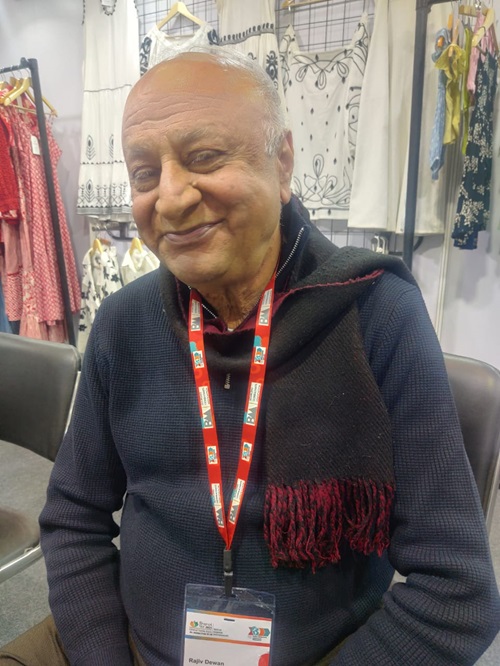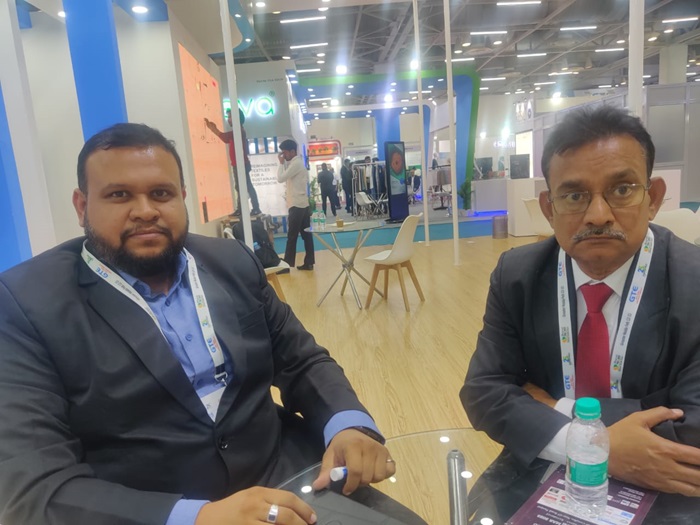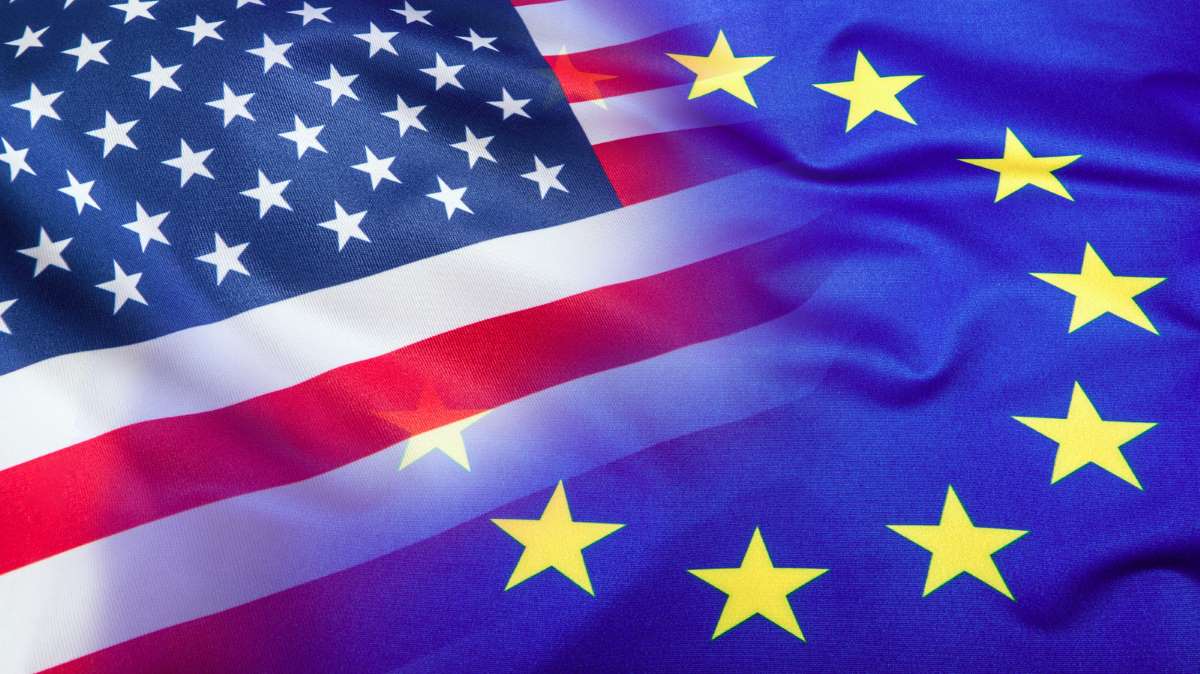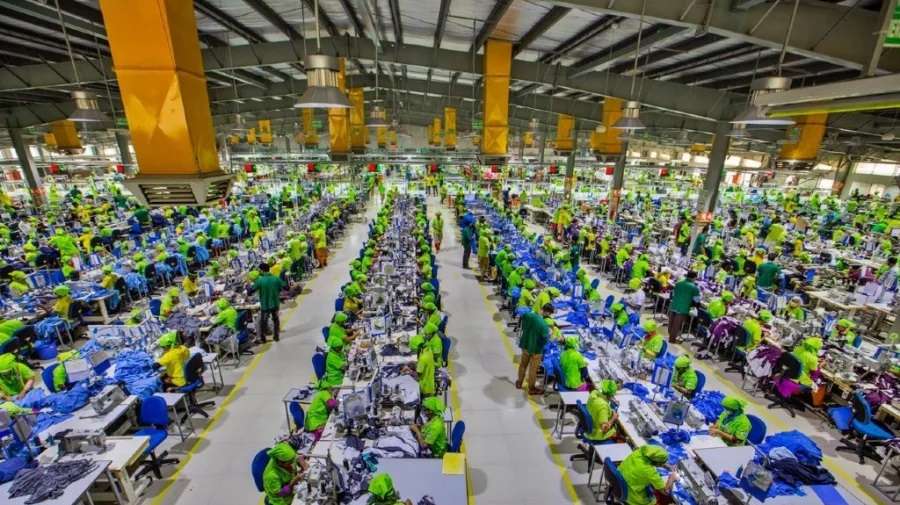
The global fashion industry is recalibrating its compass, recognizing the vibrant and diverse opportunities beyond China. While China remains a supplier, apparel brands are increasingly being attracted by the unique potential of other suppliers. This shift is evident in the strategic initiatives and impressive growth figures reported by leading fashion brands.
Shifting sourcing patterns
Traditionally, China has been the dominant player in global apparel sourcing, holding a significant market share. However, their dominance is gradually decreasing. World Trade Organization (WTO) and McKinsey estimates indicate China's share, which was once over 40 per cent, is now reducing, though it still remains the largest single sourcing nation. Concurrently, other nations are seeing increased shares. While data can vary based on the specific product category, some general trends that have emerged are:
China: While still dominant, its share is decreasing. Estimates place it somewhere between 30-35 per cent currently (though this can fluctuate), down from higher figures in the past.
Bangladesh: Remains a significant player, particularly in basic garments, often estimated to hold a 6-8 per cent share or more.
Vietnam: Has seen growth and is often cited as a key beneficiary of the ‘China Plus One’ strategy, potentially holding a 5-7 per cent share.
India: Is also gaining traction, with estimates placing its share anywhere from 4-6 per cent and growing, though realizing its full potential is still a work in progress.
There are several reasons for the changes in apparel sourcing. Geopolitical factors are a major reason as trade tensions and political instability in certain regions are pushing buyers to diversify their sourcing to reduce risks. Moreover, rising wages in traditional manufacturing hubs like China are making other countries with lower labor costs more attractive. Also, the COVID-19 pandemic exposed vulnerabilities in global supply chains, prompting buyers to seek more diversified and resilient sourcing options. Growing consumer awareness of environmental and social issues is pushing brands to source from manufacturers with sustainable practices. Add to it automation and digitalization that are changing the dynamics of manufacturing, making it possible for some countries to become competitive even with slightly higher labor costs.
India in this changing scenario
India is well-positioned to capitalize on these shifting sourcing patterns. To its advantage it has a large pool of skilled labor, particularly in textile and garment manufacturing. India also has a long history in textiles and a well-developed manufacturing ecosystem, from raw materials to finished garments. The government has undertaken various initiatives to promote textile and garment exports, such as production-linked incentive (PLI) schemes and streamlined regulations. Also, Indian manufacturers are increasingly adopting sustainable practices, aligning with the growing demand for eco-friendly and ethical products.
Tanya Bhatia, General Secretary, Sourcing Consultants Association (BAA) notes, "When they talk of sustainability the global buyers look at India as their partner for sustainable products and they are willing to hand hold us and you know nurturing us and taking us all the way forward. They do not look at China for a sustainable product..." She further adds, "...India is moving far ahead of the anticipated rate and global partners look at India and let me tell you that most other Asian countries are not even providing these measures to their customers. It's only India which is on the forefront and whenever they look at a sustainable requirement, they reach out to India." Bhatia also emphasizes the potential for growth, stating, "...we are rather optimistic about having our fair share of global space in comparison to China," implying that India is seen as a viable alternative and is poised to gain market share. Regarding sourcing strategies, Bhatia observes, "The China plus one policy is going to benefit India..." highlighting how this diversification strategy positions India as a prime beneficiary.
Insights from ‘The State of Fashion 2025’ report
Latest ‘The State of Fashion’ report, by McKinsey & Company and Business of Fashion (BoF), offers valuable insights into the apparel industry's future. The report emphasizes the need for brands to build more resilient and agile supply chains. This aligns with India's strengths as a diversified sourcing destination, reducing reliance on single-source manufacturing. The report often highlights the need for companies to diversify their manufacturing footprint and build in redundancies.
The report consistently underscores the growing importance of sustainability. This is a critical area where India can excel, given its increasing focus on eco-friendly practices and ethical labor standards. Consumers are more and more demanding transparency and traceability. While not always explicitly stated as ‘nearshoring’, the report acknowledges the trend towards more regionalized supply chains, with brands seeking to source closer to their end markets. This can benefit India, especially for brands serving markets in Europe and other parts of Asia. The report also stresses the importance of digitalization and technology adoption across the value chain. This is a crucial area for India to focus on to enhance its competitiveness. Automation, data analytics, and other digital tools are becoming increasingly important.
Impact of China Plus One and Bangladesh Plus One
Meanwhile, the China Plus One strategy has significantly benefited countries like India, Vietnam, and Bangladesh. While Bangladesh remains a major player due to its low labor costs, India is gaining traction by offering a more comprehensive manufacturing ecosystem, skilled labor, and a focus on sustainability. The Bangladesh Plus One strategy, while relevant, is less impactful on India as it primarily focuses on diversifying away from Bangladesh within a similar cost-sensitive segment. India is aiming for a more diversified product range, including higher-value garments.
New opportunities for India
The changing dynamics of apparel sourcing has created many new opportunities for India.
Increased export share: India can significantly increase its share of global apparel exports by attracting buyers looking for alternative sourcing destinations.
Value addition: India can move up the value chain by focusing on higher-value garments, design capabilities, and brand building.
Technological advancement: The adoption of advanced manufacturing technologies can further enhance India's competitiveness.
Sustainable manufacturing: India can become a leader in sustainable apparel manufacturing by promoting eco-friendly practices and ethical labor standards.
But despite these opportunities, India also faces challenges. Inadequate infrastructure, such as transportation and logistics, hinder efficient manufacturing and exports. Similarly, while India has a large workforce, there is a need to address skill gaps in certain areas, such as design and technology. India faces competition from other countries with lower labor costs or specialized manufacturing capabilities. And complex regulations and bureaucratic processes can create hurdles for businesses.

Rajiv Dewan, ex President, GEAR, Jaipur (Ma’am Arts) shares his perspective on the export outlook: "See the trend for exports is going to be very, very healthy, you know, coming year onwards, I mean, what mid early 26, you know, the summer of Europe and America is going to be super hit." He affirms, "And going is very good for the exports. There's no doubt about it." Dewan connects export growth to broader economic benefits: "So exports, if they pick up, if they come up well, automatically the make in India will do good. You know, we are going to employ more people, more infrastructure, more development, more expansion." He also suggests a geopolitical advantage for India: "See what I feel is America has got very less options and they will definitely definitely be supporting India. Because China that chaos is there, that thing is there, so America will support India, this is what I feel."
Government support and recent initiatives
The Indian government has recognized the potential of the textile and apparel sector and has implemented several schemes and initiatives to boost its growth and competitiveness.
Production Linked Incentive (PLI) Scheme for Textiles: This scheme offers incentives to manufacturers of specific textile products to enhance domestic manufacturing and attract large investments. The PLI scheme has been a significant boost, attracting investment and aiming to increase production and exports. For example, several large textile companies have announced investments under this scheme.
National Textile Policy 2000: This provides a framework for the development of the textile industry, focusing on modernization, technology upgradation, and skill development.
Scheme for Integrated Textile Parks (SITP): This scheme aims to create world-class infrastructure for textile units, including dedicated zones for manufacturing, processing, and ancillary services.
Focus on Skill Development: Various programs are being implemented to address the skill gaps in the textile and apparel sector, ensuring a readily available workforce. Initiatives like the Pradhan Mantri Kaushal Vikas Yojana (PMKVY) play a role here.
The moot point is that the future of apparel sourcing is very promising for India. With the right policies, investments, and initiatives, India can solidify its position as a leading global sourcing hub. The focus on sustainability, technology, and value addition will be crucial for long-term growth and competitiveness.

Sainathan R, Director, Eurotech Technical Solutions, highlights India's traditional strengths: "India has always been a traditional market for cotton. It is a cotton based market and for almost 70 to 80 years now, we know how to dye cotton, how to process cotton, and how to perfectly make a good cotton garment." He also points out a key advantage: "India has got one advantage of labour. We are the highest population in India where our labour is going to help us." However, Sainathan also identifies challenges: "The global shift has now gone towards synthetic fabrics. So the demand for cotton is getting lower, the demand for synthetic fabrics is getting higher. India as of now is very much limited in technology and knowledge about how to handle this kind of new age fabrics which is for performance, which is for technical textiles and other things which are more synthetic based." He further notes, "Also the initiative to invest in new machineries, upgrade on new machineries, that is getting little bit into a situation where they are not confident enough how much order will come to India." Sainathan emphasizes the impact of taxation and import duties.












